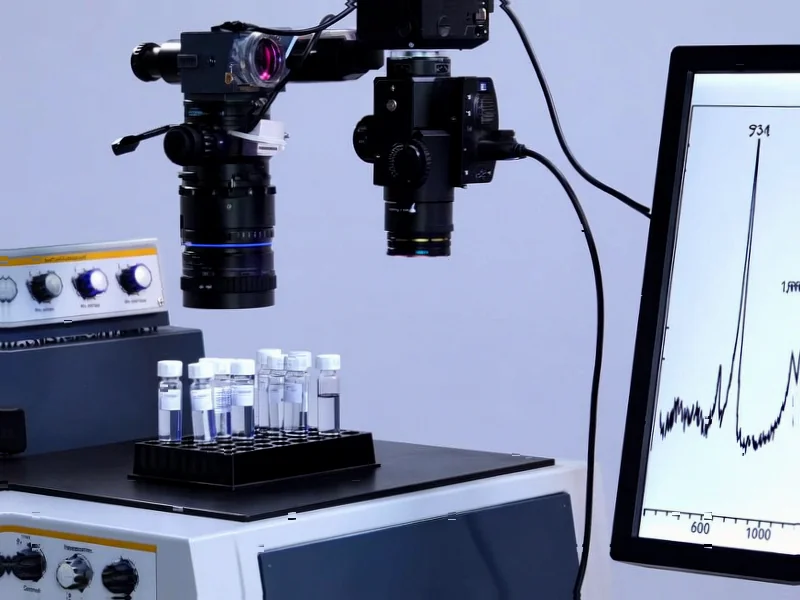According to Nature, a recent study published in Scientific Reports demonstrates that Raman spectroscopy can effectively detect prostate cancer using serum samples with significant accuracy. The research evaluated four machine learning models, finding that Support Vector Machine (SVM) performed best while Random Forest achieved 87% accuracy in classification. The analysis identified two key spectral biomarkers at 1306 cm⁻¹ and 2929 cm⁻¹, with the 2929 cm⁻¹ band showing significant correlation with PSA levels, MRI PIRADS scores, and lymph node metastasis. These findings suggest Raman spectroscopy could become a reliable non-invasive method for prostate cancer detection through liquid biopsy approaches. This research represents a significant step forward in diagnostic technology.
Table of Contents
The Technical Breakthrough Explained
What makes this research particularly compelling is how it bridges the gap between laboratory spectroscopy and clinical application. Raman spectroscopy works by measuring how light interacts with molecular vibrations, essentially creating a unique molecular fingerprint for each sample. The identification of specific wavenumbers – 1306 cm⁻¹ and 2929 cm⁻¹ – provides concrete targets for future diagnostic development. These aren’t arbitrary numbers; they correspond to specific molecular vibrations that appear to change significantly in the presence of prostate cancer. The 2929 cm⁻¹ band, which showed the strongest clinical correlations, typically corresponds to CH stretching vibrations in lipids and proteins, suggesting that prostate cancer induces measurable changes in these fundamental biomolecules within blood serum.
Transforming Prostate Cancer Diagnostics
The clinical implications here are substantial. Current prostate-specific antigen (PSA) testing suffers from well-documented limitations including false positives that lead to unnecessary biopsies and patient anxiety. A Raman-based liquid biopsy could serve as a crucial secondary screening tool, helping to triage patients who truly need invasive procedures. The correlation with PI-RADS scores is particularly noteworthy because it connects molecular changes directly to established imaging standards. This creates a potential pathway where abnormal PSA results could be followed by Raman analysis of serum before proceeding to MRI or biopsy, potentially reducing healthcare costs and patient burden while maintaining diagnostic accuracy.
The Road to Clinical Implementation
While the results are promising, several significant hurdles remain before this technology reaches clinical practice. The instrumentation required for Raman spectroscopy remains expensive and technically complex compared to standard laboratory equipment. Sample preparation and analysis times need optimization for high-throughput clinical settings. There’s also the challenge of validation across diverse patient populations and accounting for potential confounding factors like medications, other health conditions, or biological variability. The machine learning component introduces additional complexity – while principal component analysis and SVM algorithms showed strong performance, these models require extensive training on larger datasets to ensure robustness across different clinical environments.
Where This Fits in Diagnostic Innovation
This research enters a crowded but critically important field of cancer diagnostics. Liquid biopsy technologies have exploded in recent years, with companies developing blood tests for cancer detection using circulating tumor DNA, proteins, and other biomarkers. Raman spectroscopy offers a distinct advantage because it provides a comprehensive molecular snapshot rather than targeting specific known biomarkers. This could make it particularly valuable for detecting cancers where specific genetic markers aren’t well established. The technology’s ability to detect biochemical changes rather than relying on specific mutations means it might identify cancers that other liquid biopsy approaches miss, though it also faces stiff competition from established and emerging diagnostic platforms.
Realistic Timeline and Development Path
Based on typical diagnostic development cycles, we’re likely looking at 5-7 years before this technology could potentially reach clinical practice, assuming successful validation and regulatory approval. The next steps should include larger multicenter validation studies, development of standardized protocols, and work on making the technology more accessible and cost-effective. The most promising near-term application might be in monitoring treatment response rather than initial diagnosis, where changes in Raman signatures could provide early indication of treatment effectiveness. The strong correlation with established clinical parameters suggests this technology has genuine potential, but it will need to clear the high bar for reliability and cost-effectiveness that clinical diagnostics demand.



